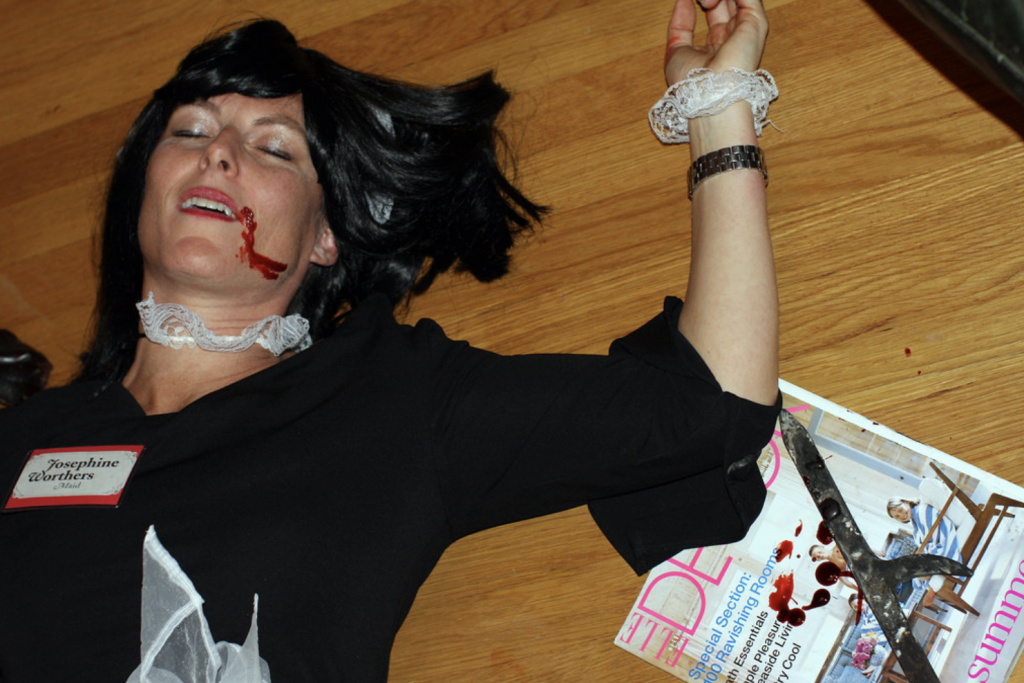In 1964, communication theorist Marshall McLuhan asserted that “the medium is the message”. This declaration, while being made before the era of the Podcast, rings true for the popular form of digital medium. With over 580 million listeners worldwide, podcasts have become an integral part of our increasingly digital world, shaping and affirming our values and beliefs. What sets podcasts apart from other forms of digital media is the uniquely personal listening experience. Individuals select podcast episodes to listen to that align with their interests and preferences, generating a specific pool of content tailored to them.

The True Crime Addiction
My true crime addiction began when I first listened to season one of ‘Serial’, an investigative journalism podcast that unpacks the 1999 murder of teenage girl Hae Min Lee and the conviction of her ex-boyfriend, Adnan Syed. I’ve listened to it a couple times since, and each time I listen I’m just as engaged as the last. Sarah Koenig’s compelling narration and the incredible sound design of the podcast’s first season keeps me on my toes each time I listen, despite nothing having changed since my previous listen.
My addiction to true crime, however, is not a unique experience; this genre and form of digital media has bewitched millions around the world. In the United States, for example, the number of adults who regularly listened to true crime podcasts tripled between 2019 and 2024, from 6.7 million to 19.1 million.
But what is it exactly that makes true crime so enticing? What is with humanity’s fascination with the morbid? Experts from Carolina’s schools of law and journalism identify curiosity about criminal motivations, concerns about law and justice, and the thrill of solving cold cases as the main causes for true crime obsession.
Something that stands out to me when discussing true crime media with others is its popularity amongst women in particular. It is estimated that 75% of all true crime podcast listeners are women, to whom these stories are not so far detached from reality. In fact, one in five women in the United States will experience attempted or completed rape during their lifetime, and 81% of women will experience sexual harrassment or assault. When the majority of violent acts discussed in true crime podcasts are against women, why are we so drawn to these stories?

The Message Shaped by True Crime Podcasts
Some contend that women make up the majority of listeners because of a pervasive, sometimes internalised, fear of gendered violence and that consuming true crime content enables us to understand and prevent such crimes in our own lives. But what message do true crime podcasts then shape? The horrifying stories they detail, in addition to the haunting sound design reverberating in the ears of (mostly) women as they catch the bus, walk through their neighbourhood, or even sit in the comfort of their own home reinforces a message that women should be in fear of their surroundings, trust no one, and take it upon themselves to prevent violence against them. It validates and justifies our fear of these crimes happening to us, no matter how extreme. Don’t get me wrong – violence against women is a universal issue that demands more attention and as a woman myself, my consciousness reminds me of the safety risks I am exposed to everyday. However, I can’t help but wonder to what extent this instinct is natural and to what extent it has been influenced by the stories playing in my ear as I go about life?
Conversely, there is another possible risk associated with the popularity of true crime podcasts; that being that they desensitise us to the horrific reality of gender-based violence. Even the title of one of the most popular true crime podcasts, ‘My Favourite Murder’, makes me question if society’s obsession with true crime is eroding our humanity. The hosts of this podcast, unlike those of ‘Serial’, are not journalists but rather storytellers who employ techniques from fiction to dramatise the stories of murder that they narrate and capture their audience. The intimate listening experience that these hosts create shapes our moral engagement with the stories they tell, somewhat blurring the line between empathy and fascination. Additionally, the catchphrase of the podcast “stay sexy, don’t get murdered” emphasises individual rather than social or structural responsibility for violence against women. The ways these podcasts sensationalise and fictionalise true crime can make us forget that gender-based violence is a reality experienced by many.
Applying McLuhan’s assertion to podcasts, it is not only the content addressed by this popular medium which shapes meaning, but equally the form in which they are produced. Having regard to true crime podcasts in particular, ominous narration, sinister music and careful pauses in storytelling shape how we consume, perceive, and relate to crime.
Sources:
The Medium is the Message, Understanding Media: The Extensions of Man, Marshall McLuhan (1964): https://web.mit.edu/allanmc/www/mcluhan.mediummessage.pdf
Podcast Statistics: https://backlinko.com/podcast-stats
Article ‘The Medium is the Message is Now’: https://medium.com/@drewvigal/the-medium-is-the-message-is-now-6fb2e2c6b75
‘Serial’ podcast: https://open.spotify.com/episode/2ZRVxPgjm8aPRqYf1FA7WV?si=44115f0ae8f24116
Article ‘Why are we fascinated by true crime?’: https://www.unc.edu/posts/2024/01/11/why-are-we-fascinated-by-true-crime/
Article ‘Why many women love true crime podcasts’: https://psyche.co/ideas/listening-in-on-horror-why-many-women-love-true-crime-podcasts
‘My Favourite Murder’ podcast: https://open.spotify.com/show/0U9S5J2ltMaKdxIfLuEjzE?si=81e4da5bce85468c
True crime podcast statistics: https://www.edisonresearch.com/true-crime-podcast-listeners-triple-in-five-years/
Violence against women statistics: https://www.nsvrc.org/statistics
Image 1, podcast microphone: “My Podcast Set I” by brainblogger is licensed under CC BY 2.0.
Image 2, fake crime scene: “Murder at Mystery Mansion” by Erik Charlton is licensed under CC BY 2.0.



I really admire how you applied McLuhan’s idea that “the medium is the message” to podcasts — it’s such a clever way to frame the discussion. Your analysis of how true crime podcasts not only reflect but also shape social attitudes toward violence, fear, and gender is incredibly compelling.
I’m into true crime podcasts, too, but your post made me look at them from a completely new perspective. I had never really considered the gender ratio of listeners or the deeper social implications behind why women, in particular, are drawn to such stories. The way you pointed out that these podcasts can both validate women’s fears and desensitize society to gender-based violence was especially striking.
Your blog made me think how the storytelling style and sound design of podcasts don’t just inform listeners — they also influence how we feel and think about crime itself.
This really broadened my perspective. Thank you for such a well-written and meaningful post!
Clever use of McLuhan! Your well-founded reflection about gender really made me think! I hadn’t thought about that aspect of it but it reminded me of the controversies of true crime also as a form for entertainment. I have had the luxury of not thinking too much about the real life aspects of it, when listening to podcasts about true crime happening far away. It created a sort of disconnect. But then a big Danish podcast was criticized by a family member to a murder victim, who they did an episode on. Denmark has 6 million people, and to do a podcast about Danish murder victims is then gonna hit closer to home for a lot of people, then these bigger countries that might even appeal to a global audience. So when the podcast “Mørkeland” reached a certain number of episodes the stories reached a lot of friends and families of the victims. It really made me reflect about being entertained by listening to the most horrifying part of someone’s life. While I used to be an active listener of true crime, I am not anymore. The enjoyment of murder now makes me uncomfortable.
It all makes me curious if your own reflection affected your own enjoyment of true crime?